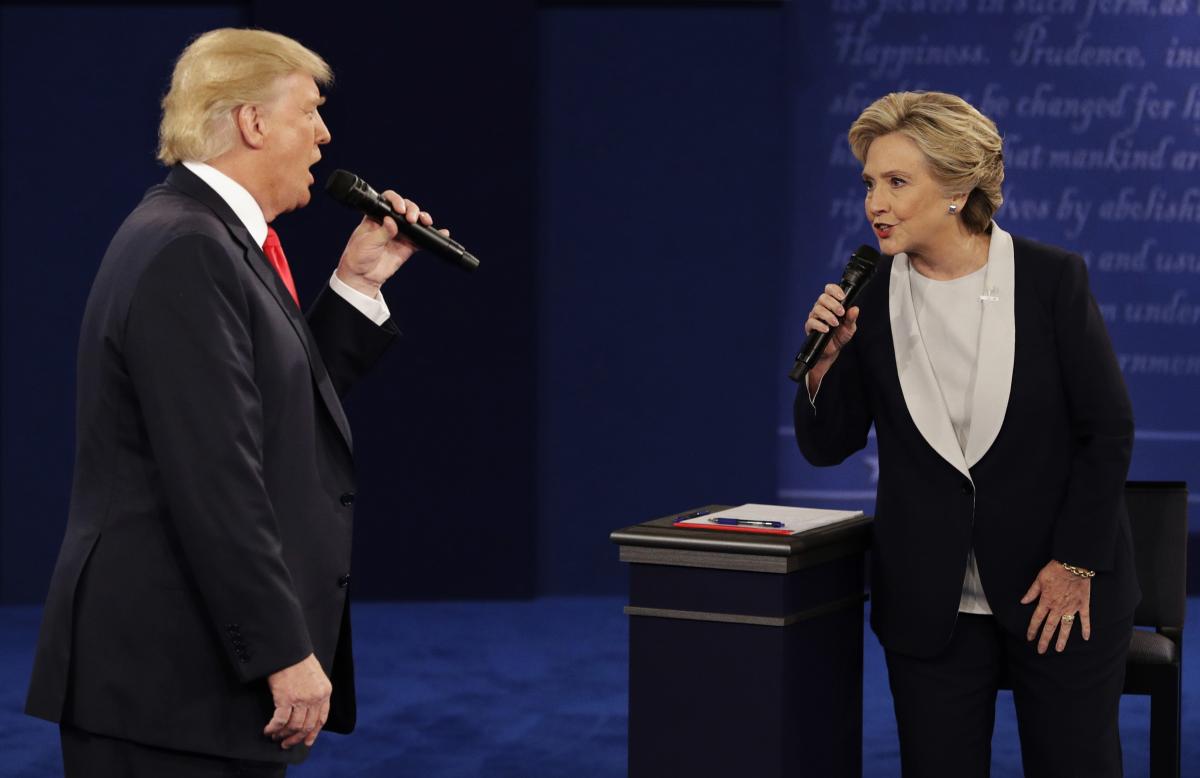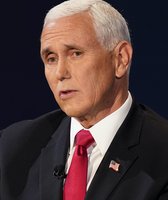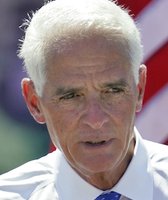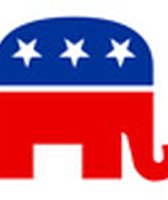Get PolitiFact in your inbox.
Ignoring the facts has long been a staple of political speech. Every day, politicians overstate some statistic, distort their opponents’ positions, or simply tell out-and-out whoppers. Surrogates and pundits spread the spin.
Then there’s fake news, the phenomenon that is now sweeping, well, the news. Fake news is made-up stuff, masterfully manipulated to look like credible journalistic reports that are easily spread online to large audiences willing to believe the fictions and spread the word.
In 2016, the prevalence of political fact abuse – promulgated by the words of two polarizing presidential candidates and their passionate supporters – gave rise to a spreading of fake news with unprecedented impunity.
Fake news: Hillary Clinton is running a child sex ring out of a pizza shop.
Fake news: Democrats want to impose Islamic law in Florida.
Fake news: Thousands of people at a Donald Trump rally in Manhattan chanted, "We hate Muslims, we hate blacks, we want our great country back."
None of those stories – and there are so many more like them – is remotely true.
Fake news found a willing enabler in Trump, who at times uttered outrageous falsehoods and legitimized made-up reports. Clinton emboldened her detractors and turned off undecideds with a lawyerly parsing of facts that left many feeling that she was lying. Her enemies ran wild.
Each year, PolitiFact awards a "Lie of the Year" to take stock of a misrepresentation that arguably beats all others in its impact or ridiculousness. In 2016: where to start? With such a deep backlash against being truthful in political speech, no one person (though there are world-class frontrunners) and no one political claim perfectly stands out as the dust settles from an extraordinary campaign.
Because of its powerful symbolism in an election year filled with rampant and outrageous lying -- PolitiFact is naming Fake News the 2016 "winner."
Oxford Dictionaries selected "post-truth" as its word of the year and defined it as the state of affairs when "objective facts are less influential in shaping public opinion than appeals to emotion and personal belief."
Fake news is the boldest sign of a post-truth society. When we can’t agree on basic facts -- or even that there are such things as facts -- how do we talk to each other?
It’s a media ecosystem where "everything is true and nothing is true," said President Barack Obama in an postelection interview with the New Yorker. "And the capacity to disseminate misinformation, wild conspiracy theories, to paint the opposition in wildly negative light without any rebuttal — that has accelerated in ways that much more sharply polarize the electorate and make it very difficult to have a common conversation," he said.
For those who care about accuracy and evidence, it’s time to recognize that something really has gone off course.
What made 2016 different
Bad information has always lived online. Before fake news, there were electronic message boards where people shared conspiracy theories and emails instructing you to FORWARD THIS TO EVERYONE YOU KNOW!!! Before the computer, there were anonymous pamphlets and chain letters sent through the mail.
But in 2016, most viral lies spread on Facebook. They were reinforced by Google searches, in which stories from dubious sites jumped to the top of your screen based on traffic.
Bad actors would create fictitious Web pages that people couldn’t resist sharing: claims that Pope Francis endorsed Donald Trump, or that Hillary Clinton sold weapons to ISIS, or that she helped fund ISIS. (None of those things is true.)
The popular website BuzzFeed analyzed the interest in these fake stories and found that they got more shares, reactions and comments during the final three months of the campaign than real stories from the New York Times, the Washington Post and CNN, for example.
Craig Silverman, a Toronto-based journalist with a long track record of reporting on misinformation and media errors, headed up BuzzFeed’s analysis of fake news on Facebook during the 2016 election.
"Conspiracy theories, hoaxes, anonymous messaging … these things have always been around and circulating," said Silverman, now BuzzFeed’s media editor. "But Facebook is a game changer because of its size."
With 1.79 billion people around the world using Facebook each month, Facebook dwarfs other online platforms. Hoping to encourage people to be better informed, Facebook after the 2012 election introduced new tools explicitly aimed at helping users read news and share stories. Ironically, Facebook’s technology and good intentions fueled the rise of fake news in 2016.
Creators of fake news found that they could capture so much interest that they could make money off fake news through automated advertising that rewards high traffic to their sites. A man running a string of fake news sites from the Los Angeles suburbs told NPR he made between $10,000 and $30,000 a month. A computer science student in the former Soviet republic of Georgia told the New York Times that creating a new website and filling it with both real stories and fake news that flattered Trump was a "gold mine."
Sheryl Sandberg, Facebook’s chief operating officer, said the fake news problem on the site has been overblown. "There have been claims that it swayed the election, and we don't think it swayed the election,'' she said on the Today show recently. "But we take that responsibility really seriously. And we're looking at things, like working with third parties, helping to label false news, doing the things we can do to make it clearer what's a hoax on Facebook."
Well-wishers left flowers and notes outside Comet Ping Pong, the pizza restaurant in Washington that was the target of fake news stories linking it to a child sex trafficking ring. (AP)
Tracking and checking fake news
Fake news swims in the same electronic currents as everyday exaggerations, hard-charging opinion and political hyperbole. That makes it seem normal, even when it’s just crazy, made-up stories that develop under the radar before blowing up into viral memes.
Take, for example, the rumor that Clinton and her campaign chairman, John Podesta, were running a child sex ring out of a pizza shop. BuzzFeed reported that the rumor seemed to start from a Twitter account associated with white supremacy.
From there, users on the online forums 4chan and Reddit argued (perhaps facetiously) that evidence for the theory was to be found in Podesta’s stolen emails, which WikiLeaks had posted on the Internet weeks before. Podesta’s repeated use of the word "pizza" in his email was a code word for pedophilia, they theorized, and Comet Ping Pong housed secret rooms to imprison children. Fake news sites, such as YourNewsWire.com, tap-news.com and USA Newsflash, turned the story into Facebook posts that earned roughly 100,000 interactions per post.
Other fake news had less convoluted origins. Paul Horner runs a string of websites, some looking deceptively like mainstream news organizations. He created a post that said protesters at Trump rallies were paid $3,500 to disrupt the rally as a dirty tricks plot. He told the Washington Post he knew it wasn’t true but wrote it as a parody that could make him money if people actually believed it. "I just wanted to make fun of that insane belief, but it took off," he said.
What happened next is classic: Trump himself repeated the claim about paid protesters at a rally.
In fact, all campaign long – and since the election – people of stature and education have repeated fake stories. Trump’s nominee for national security adviser, retired Army Lt. Gen. Michael Flynn, repeated the false claim that Florida Democratic senators voted to impose Islamic Sharia law in the Sunshine State (Pants on Fire). Flynn’s son, who had a role on the transition team, repeated the Clinton "pizzagate" rumor.
So you can only blame the Internet to a point.
Republican presidential nominee Donald Trump and Democratic presidential nominee Hillary Clinton speak during the second presidential debate at Washington University in St. Louis on Oct. 9, 2016. (New York Times)
The 2016 election, a bridge to fake news
The PolitiFact staff debated a number of other specific claims as possible lies of the year. (Our annual poll of readers showed they were sick of the whole election. Readers voted the 2016 election itself as the biggest falsehood of the year.)
We considered Clinton’s defensive statements about her emails. She said she "never received nor sent any material that was marked classified" on her private email server while secretary of state. That was False; some classified material did end up there.
She said that FBI director James "Comey said my answers were truthful, and what I've said is consistent with what I have told the American people." Pants on Fire. Comey called her actions careless and was careful not to endorse her comments.
As for Trump, who took Lie of the Year honors in 2015 for his body of work, there were many possibilities. Since the Tampa Bay Times started PolitiFact in 2007, no other major politician has a worse record for accuracy, with more than 70 percent of his claims rated Mostly False, False or Pants on Fire.
This year’s unfounded Trump claims included:
-
That he opposed the war in Iraq before it started. This is False, even though he made the claim again and again.
-
That widespread voter fraud is happening in the United States. This is Pants on Fire; both Democratic and Republican election officials say it’s not true. Trump said it during the election when he was down in the polls, and he said it after he won, too.
-
That Ted Cruz’s father was involved in the assassination of President John F. Kennedy: Pants on Fire. Trump seems to have gotten this one from a report in the supermarket tabloid the National Enquirer.
On Election Day, when asked if Trump was honest and trustworthy, 64 percent of voters said no, according to exit polls. But when asked if Clinton was honest and trustworthy, voters were almost equally dubious; 61 percent said no.
Clinton’s PolitiFact scorecard reflected much more accuracy than Trump’s, but her detractors saw it more as calculation than candor.
"There was a large part of the Democratic primary electorate who had concerns about the secretary’s veracity and forthrightness," said Jeff Weaver, Bernie Sanders’ campaign manager, once the election was over.
Trump won thanks to the voters who said he was the better candidate to bring about change.
"This is the problem with the media. You guys took everything that Donald Trump said so literally," said former campaign manager Corey Lewandowski at a postelection forum. "The American people didn’t. They understood it. They understood that sometimes — when you have a conversation with people, whether it’s around the dinner table or at a bar — you’re going to say things, and sometimes you don’t have all the facts to back it up."
Or put another way (with apologies to Billy Joel), to some voters, even when Trump may be wrong, he may be right.
We can’t handle the truth
Throughout the 2016 campaign, Trump was blasted for his falsehoods. But buoyed by those who saw him as more authentic than choreographed pols, he took a bold approach to truthfulness – essentially saying: Catch me if you can – and even if you do, it doesn’t matter.
That’s a dangerous state for fact-checkers -- and a free society -- to be in, said Jacob T. Levy, a libertarian and political scientist at McGill University.
"The fact-checking model presumes that all audiences are equally interested in the truth and all politicians are concerned about being caught lying. But 2016 exploded that," he said. "Trump exposed a way in which it can’t work, which is when you overwhelm the system with a repeated refusal to be embarrassed about saying things are not true. That suggests something new and dangerous."
In the weeks since the election, a public conversation has emerged about post-truth politics, specifically how to encourage truth and bat down falsehoods.
"What we need to do is to figure out a way to deploy the weapons of truth as effectively as other people are deploying the weapons of dissembling," said Politico senior political correspondent Glenn Thrush on a recent episode of the Diane Rehm Show.
While Trump garners much support with his party, some conservatives say he needs to be confronted on his falsehoods, because they lead to authoritarianism. People who are credulous enough to believe fake news will also believe and follow elected officials who lie.
Evan McMullin of Utah, a former CIA officer, ran for president as a conservative independent alternative to Trump and has been warning fellow conservatives to support factual accuracy as a means of resisting government coercion.
McMullin listed on Twitter 10 ways average Americans can resist authoritarianism, including following many credible sources of news. "Be very well-informed and learn to discern truth from untruth," he said.
Brendan Nyhan, a professor at Dartmouth College who studies fact-checking, said that studies show people are willing to update some of their beliefs if presented with contradictory information. Fact-checkers and people who care about democratic governance have to keep asserting the importance of accurate information, even as the media figures out new ways to tell the truth in more compelling ways.
"There’s a real darkness here if we give up on facts," Nyhan said. "Standing up for facts is a kind of patriotic act, and a necessary one."
Sign up for the PolitiFact email newsletter at bit.ly/politifactemail.
Our Sources
PolitiFact























































